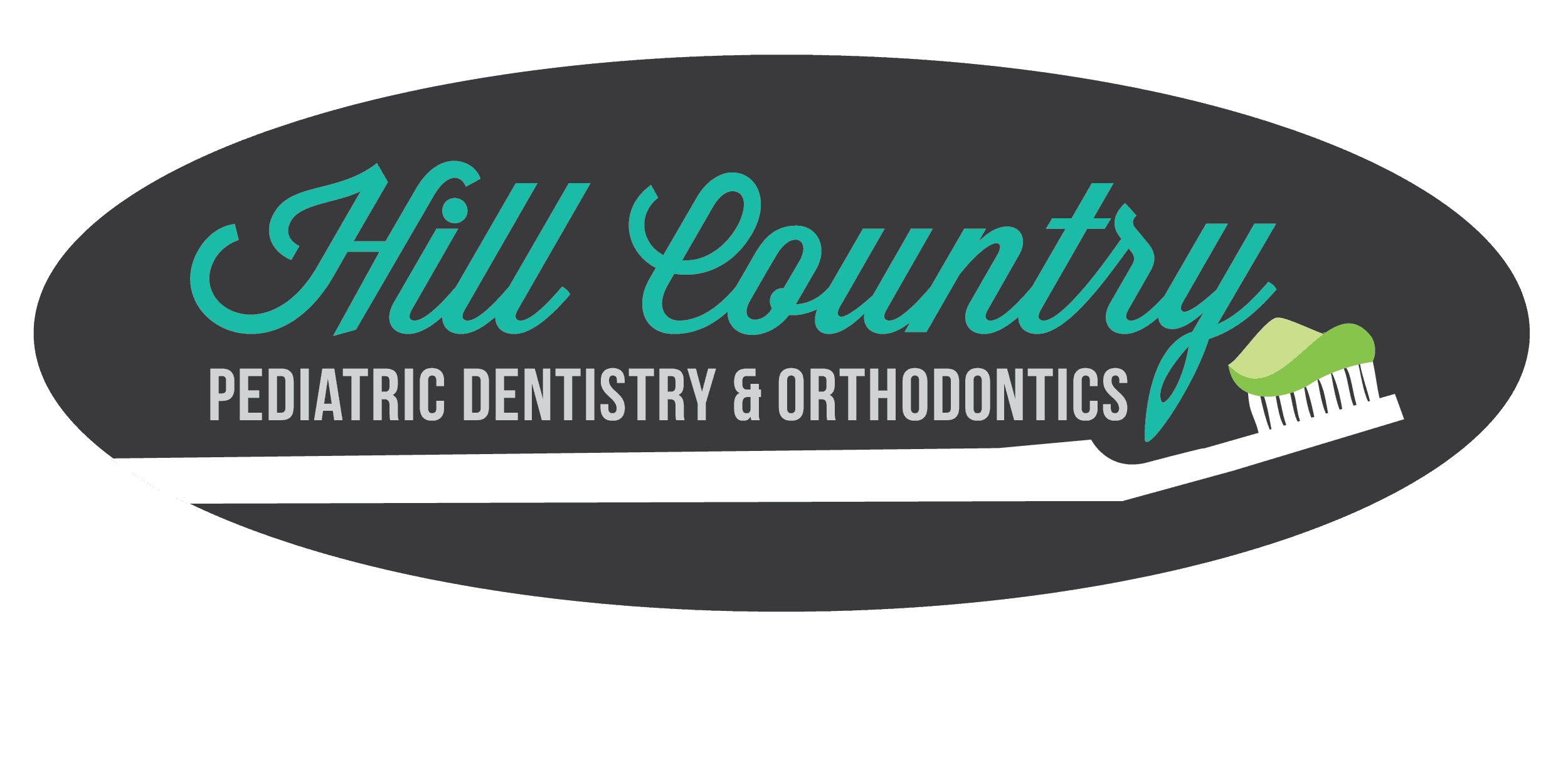Dental Care for Infants
As a pediatric dentist in Austin, we specialize in caring for the oral needs of children. Our expert staff are readily available to provide care to your child, even as young as a few months of age. When you visit our dentist in Hill Country, you’ll see why we’re the number one choice for pediatric dental care in the area.
Your child’s dental development starts during pregnancy. When your baby is born, you normally can’t see any teeth in their mouth – but they’re there – embedded in the gums. Once your infant is about 4-6 months old, their teeth may start coming through. The first ones to be seen will be the lower front four. Over the course of the next few years, your baby will keep cutting teeth until the age of about 2-3, when all 20 baby teeth are in.
There’s a lot to learn about your child’s oral development and taking care of their baby teeth. Here are some tips to help you along the way.

Your Teething Baby
Teething is the process in which your infant’s teeth begin to erupt through the gums. Every experienced parent knows how frustrating and difficult it can be to experience. No one likes to see a baby suffering. Teething also means a lot of sleepless nights for both the little one and their parents.
As mentioned earlier, your infant will start teething somewhere between 4-6 months. Here are some signs that they may be getting ready to cut their teeth:
- Low-grade fever
- Fussiness and irritability
- Excessive drooling
- Chewing on things
- Loss of appetite
- Difficulty sleeping
Since teething is so uncomfortable for both baby and parents, our pediatric dentist in Hill Country wants you to be educated and prepared on how to handle this inevitable phase.
For a low-grade fever, you can give your child an over the counter fever reducer/pain medication like acetaminophen (Tylenol.) This can also be effective for fussiness and irritability – as they may be acting like this because they’re in pain.
All infants drool but while teething you will notice an excessive amount. Saliva can cause irritation to your child’s skin, creating rashes around the mouth or neck. Consider keeping a bib on them. You can also use a petroleum-based cream on their skin to serve as a protective barrier.

Your baby will begin to gnaw on things in hopes of getting some relief from their sore gums. In most cases, they’ll find something that can harm them. So be prepared to provide items that your child can chew on safely. Cold things feel great to babies’ gums. Teething rings and other baby products are readily available and can be placed in the refrigerator until use. For something quick and simple, you could use a frozen washcloth or cold pacifier.
If your infant is also having difficulty eating, then the items you choose for them to gnaw on can be edible. For instance, cold or partially frozen fruit works great. Slices of strawberry or other fruit are great to chew on when supervised.
If you do want to feed your child something more substantial, then try scheduling meal times about 20 minutes after you’ve given your baby a pain reliever to help them be less fussy. A meal followed by a nap will hopefully provide some peace and quiet for both of you!
Our pediatric dentist in Austin recommends staying away from offering any items that pose a choking hazard, like a teething necklace or food that isn’t properly cut up. For added safety, consider purchasing a teething aid with a mesh pouch, where fruit slices can safely be placed inside without posing as a choking hazard.
Also, don’t apply a numbing agent like lidocaine to the gum tissue. This topical anesthetic has been proven to be dangerous and potentially fatal when used on infants and young children.
Gum and Tooth Care
Though these twenty primary teeth are only temporary, they have a specific purpose. Taking care of them properly is key to ensuring that they stay healthy throughout childhood as adult teeth develop.
Beginning an oral hygiene regimen before your little one starts cutting teeth will help them to become accustomed to you cleaning their mouth. For infants without teeth, you can wrap a wet washcloth around your finger and gently massage their gums, tongue, and the roof of their mouth after each feeding. Be careful not to scrub too fast, too hard, or go too far back – since this can cause your baby to gag.
When your infant starts teething, you can begin brushing their teeth with a soft bristle toothbrush – along with a rice grain sized amount of fluoride toothpaste. Try to do this twice a day to get your child accustomed to it, and to avoid preventable dental problems.
You Child’s First Dental Visit
Your child should be seen by a pediatric dentist by the time they reach a year old, or around the time they cut their first tooth – whichever comes first. We’ll begin to perform check-ups on a regular basis to make sure your baby’s smile is developing properly and no intervention is needed on our behalf. Some of the things we may want to discuss include thumb/pacifier habits, diet, tooth development, jaw anatomy, speech, tongue ties, nursing difficulties, etc.
Around the age of 3-4, we’ll start to transition your child into getting bi-annual cleanings. By this point, your little one will be more comfortable with our friendly team – so they’ll be able to enjoy a positive experience that will hopefully follow them well into adulthood.
Come be Part of Our Family
When you put your family’s dental care in the hands of Hill Country Pediatric Dentistry and Orthodontics, there’s no need for you to go anywhere else! To make things easier on you, our pediatric dentist works alongside an orthodontist in Hill Country so that when your child is at the age of needing braces, we can provide comprehensive treatment in-house.
If it’s time for us to meet your little one, then give us a call today. Our expert pediatric dentist and orthodontist in Hill Country can’t wait to meet you and your child!





